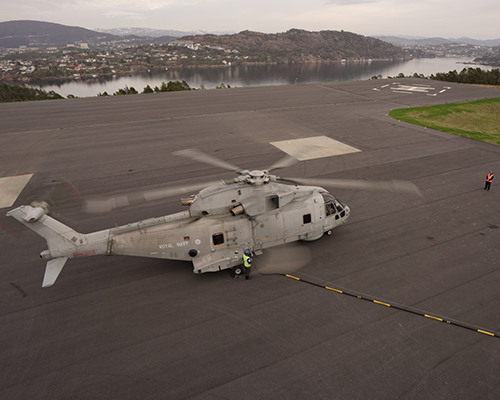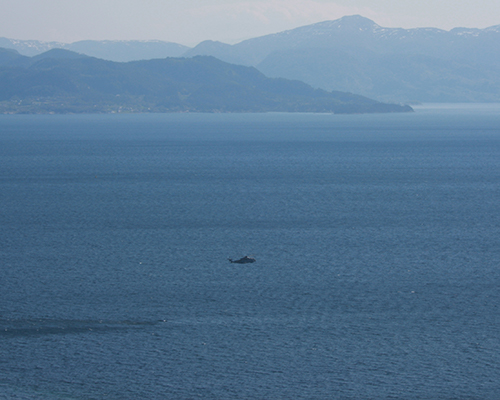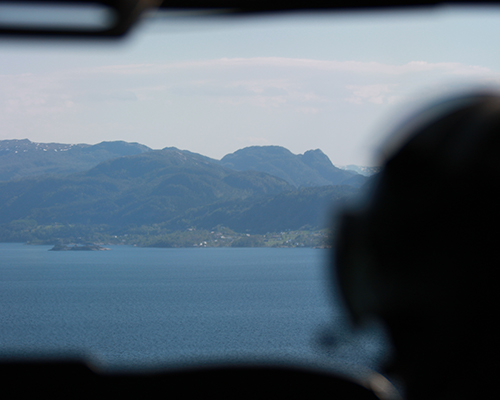Submarine hunting in the land of the Vikings
Royal Navy Merlin helicopters fitted with Thales anti-submarine warfare sonar have returned from a successful joint maritime exercise in the challenging waters of the Norwegian Fjords.
Crews and two Merlins from 824 Naval Air Squadron at Culdrose in Cornwall deployed to Norway to take part in Exercise Rogue Wizard 2018.
Specialist Merlins are fitted with Sonar 2189, a Folding Light Acoustic System (FLASH), which includes an active sensor dipped into the water by winch to locate submarine targets.
FLASH-equipped Merlins and their highly-trained crews can operate over deep and shallow water, making them highly flexible and mobile platforms. During this recent exercise, the Navy described the Merlin as ‘the best anti-submarine helicopter in the world’.
824 Squadron is the unit which trains students in operating the Merlin, equipping them with the knowledge and skills that will be required once they deploy on operations at sea.
Based near Bergen, the crews flew intensively to locate, track and attack the Norwegian submarine UTHAUG. Starting offshore in the North Sea, the scenario quickly developed and progressed inland to the deep fjords allowing invaluable training to take place in a relatively unfamiliar environment.

|

|

|
Detachment Commander Lt Cdr Dan Waskett said: “The North Atlantic remains one of the most important for the Royal Navy. Developing ASW skills to operate within the fjords and challenging conditions of Norway, is critical to support future Merlin Force tasking in support of UK interests.”
“The techniques and experience are transferable across a range of environments however, and the excellent training opportunities afforded us, allow our crews to develop the deep specialist knowledge essential in maintaining our tactical edge.”
Student Observer Riley Handforth said: “To come here and operate against a foreign submarine in their own backyard is as much of a challenge as it is a privilege.”
“The submarine crew know their waterways so well so it really does make it all the more satisfying when we are able to detect and attack them.”
Student Aircrewman Andrew Smith added: “This is a very different environment to the one we are used to in Cornwall – the deep fjords coupled with the fresh water running off the glaciers make for an extremely challenging ASW environment. However, our previous training has prepared us well for the exercise.”
Once the students pass the course and are awarded their wings, they will move to frontline squadrons where they can expect to regularly deploy overseas on both exercises and operations in support of UK tasking.
Merlins equipped with Thales Sonar 2189 also operate off eight Royal Navy Type 23 frigates which are fitted with the immensely powerful Sonar 2087 submarine hunting sonar.
HMS Queen Elizabeth, the Navy’s largest ship and flagship aircraft carrier, is also protected from the threat of submarines by Merlin submarine hunters equipped with our sonar.
Original article courtesy of RNAS Culdrose. All images © Royal Navy/UK MoD. All rights reserved.